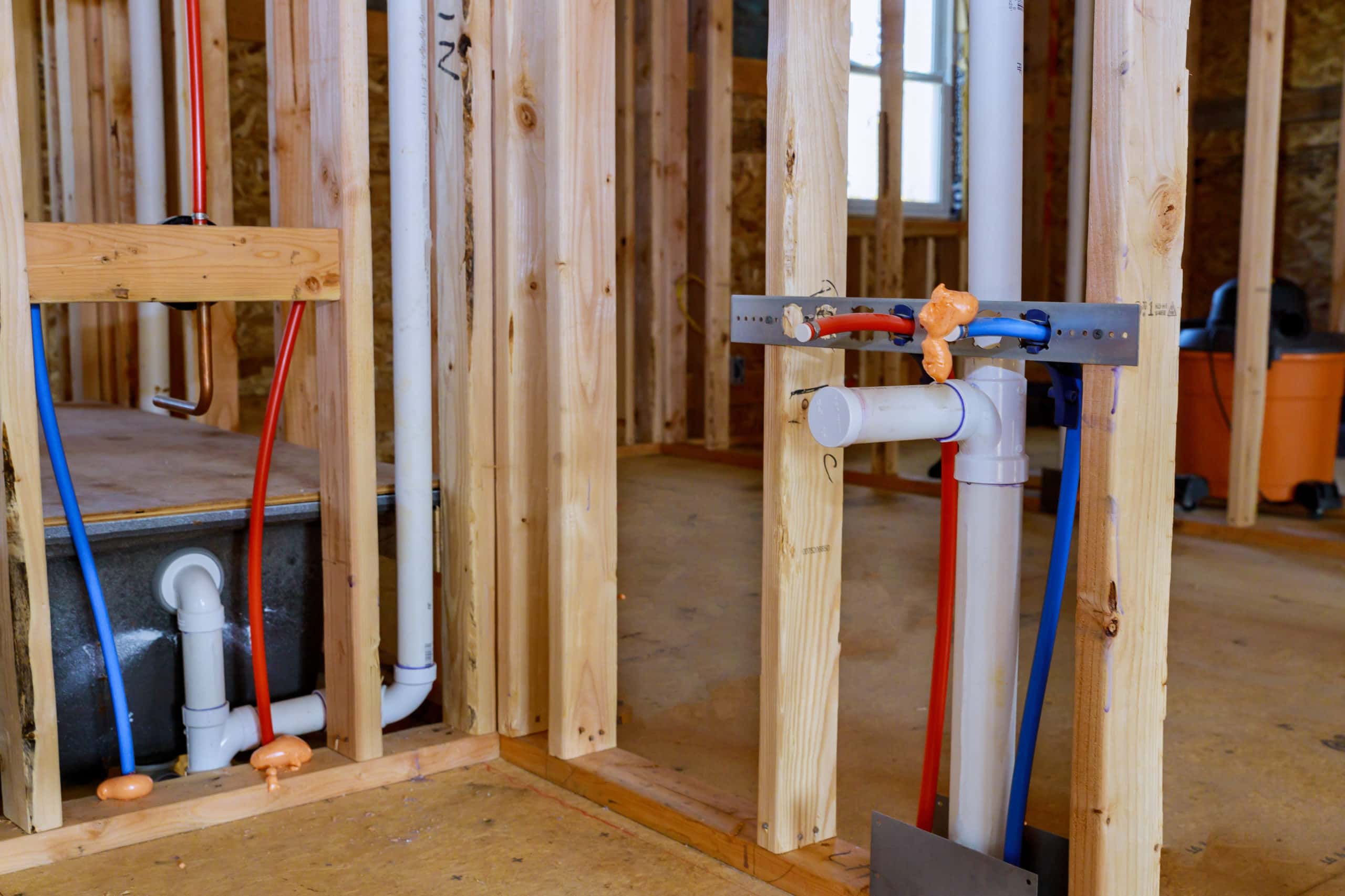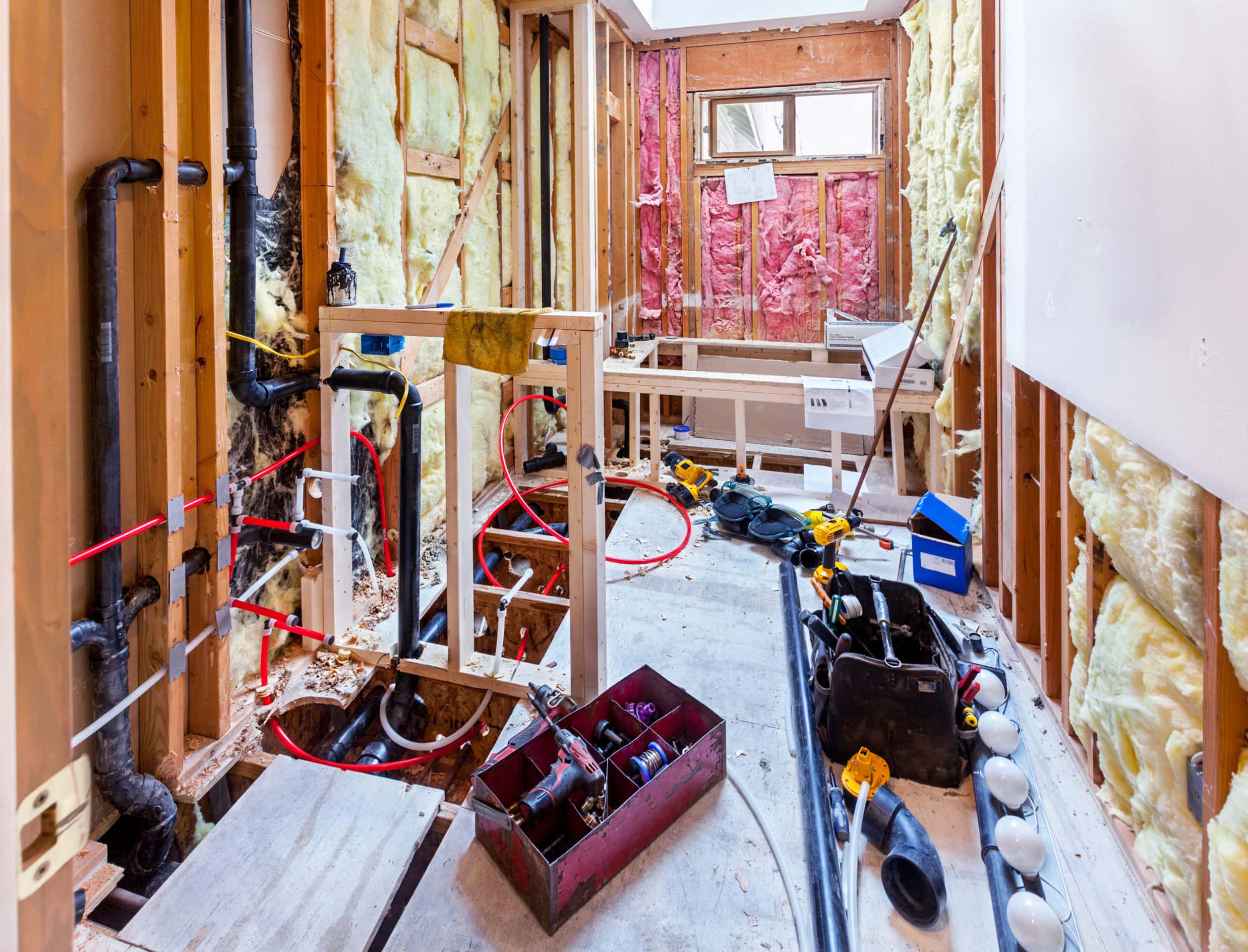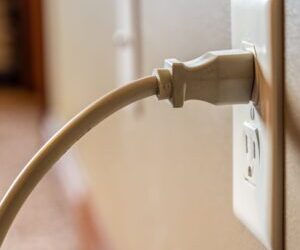A home remodel can feel like it takes forever, especially during the rough-in phase.
We get it. It’s your home, after all. You want to be able to walk into a nice, new kitchen or bathroom and go about your day. But, when you’ve got a bunch of guys working in your home day in and day out, it can be tough to do that. We understand.
From a homeowner’s perspective, a lot of times the most annoying step in the remodel process is the “rough-in”. This is the stage after the walls have been taken down, but before new walls are put up.
Usually, homeowners despise the rough-in phase simply because of the way it makes their home look. No one, after all, wants to come home from work to a demolition site. However, there are some important things that happen during the rough-in, so we wanted to explain how it works.

What is a Rough-In?
The rough-in usually begins right after demolition. “Demo”, as we call it, is a quick and easy process. We tear down the walls, remove any appliances that need to go, clean up, and keep moving. It can take a few days depending on the size of the home and it is quick visual progress.
Some people think that new walls can go up as soon as the old ones are taken down. But, that’s usually not the case. Typically, we need a week to complete a handful of other tasks before new drywall goes up and can vary depending on project size.
Tasks vary from house-to-house. However, they usually include:
Electrical work: The walls of a home have all kinds of stuff running through them. Electrical for phone jacks, lights, fans, and other things are all running through those walls. So, as we’re building new walls or repairing old ones, a licensed electrician runs new electrical as needed and ensures all is safe before drywalling.
Plumbing: Plumbing pipes and water lines are also hidden behind the walls. So, if a remodel requires the pipes to move, a plumber is called in to take care of that. They’ll reroute the pipes around the new design to reach the bathroom, kitchen, and other rooms with running water.
With both plumbing and electrical work, an inspector may need to come in to check the quality of the job.

Why Does It Feel Like It’s Taking Forever?
Depending on the size of the house and the availability of electricians, plumbers and inspectors, a typical rough-in can take a couple of days to a week generally. In our experience, however, it feels like a lot longer to homeowners.
This is usually because of the lack of visual progress. During the demolition phase, the house changes drastically. Walls are torn down, space opens up, and the whole home feels different.
Once we start putting drywall up, there’s a lot more evidence of progress. The walls go up, paint is applied, and it starts to feel like it’s coming together.
During the rough-in, though, progress doesn’t feel so fast, the work being done just isn’t as exciting as demolition or seeing your material selections being installed. However, the work being done behind the walls is some of the most important in your remodel. Because we’re dealing with electricians and plumbers, the house might look exactly the same at night as it did in the morning.
While this stage might feel a little slow, please don’t let this worry you. We’re working hard to get your project finished, we promise. Your home will be done in no time.
How to Make the Rough-In Stage Go By Faster
If you want to help the rough-in stage go by faster, we encourage homeowners to take the time to find a quality contractor to trust with the remodel. While you can do everything you can to plan ahead and provide your contractor with all of the information they need before they start, they will most likely be the one hiring out subcontractors and specialists for the job. This is why it is crucial to find a trusted contractor with a good reputation that will honor your timeline and work with you to get your project done on time.
If you are looking for a quality contractor in Iowa, make sure to give 0ur team at Homeworx a call! We would love to work with you.



0 Comments